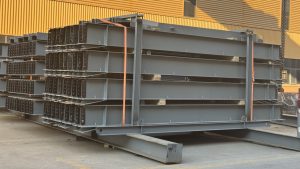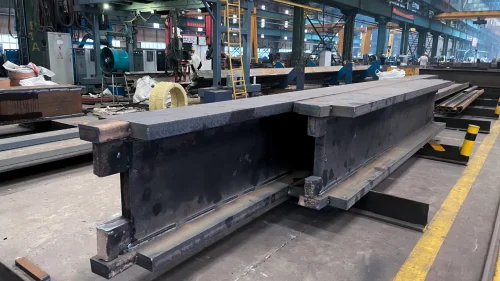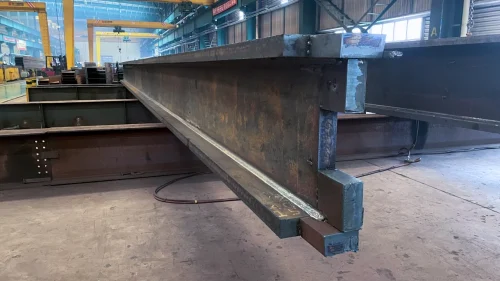Customized Steel H Beam
A customized steel H beam is a structural steel member designed and manufactured to meet specific dimensional, load-bearing, and application requirements rather than following standard sizes. The “H” shape—consisting of wide flanges connected by a vertical web—offers excellent load-carrying capacity, making it widely used in building frameworks, bridges, industrial plants, and heavy machinery supports.
Key Features
-
Material Options
-
Common grades: Q235B, Q355B, ASTM A36, ASTM A992, S235JR, S355JR.
-
High-strength low-alloy steels available for heavy-duty structures.
-
Weathering steel (Corten) for outdoor applications.
-
-
Surface Treatments
-
Hot-dip galvanizing for corrosion resistance.
-
Powder coating or painting for aesthetic and protective purposes.
-
Sandblasting to remove rust and scale before coating.
-
-
Fabrication Services
-
Welding: For splicing or joining beams to achieve extra length or special shapes.
-
Drilling & punching: For bolted connections.
-
Cutting & notching: For custom installation requirements.
-
Cambering: Introducing a slight upward curve to counteract load deflection.
-
-
Standards & Certifications
-
Compliance with GB, ASTM, EN, or JIS standards as required.
-
Mill test certificates (MTC) for material traceability.
-
Applications
-
Construction: Columns, beams, floor girders in commercial and industrial buildings.
-
Infrastructure: Bridge beams, support structures for transportation projects.
-
Industrial: Machinery frames, crane girders, warehouse racking systems.
-
Marine & Offshore: Shipbuilding, oil platform structures.
Advantages of Customization
-
Optimized weight-to-strength ratio for cost efficiency.
-
Better fit for non-standard architectural or engineering designs.
-
Reduced need for on-site modifications, saving labor time.
-
Ability to integrate special connection details directly at the factory.






Reviews
There are no reviews yet.